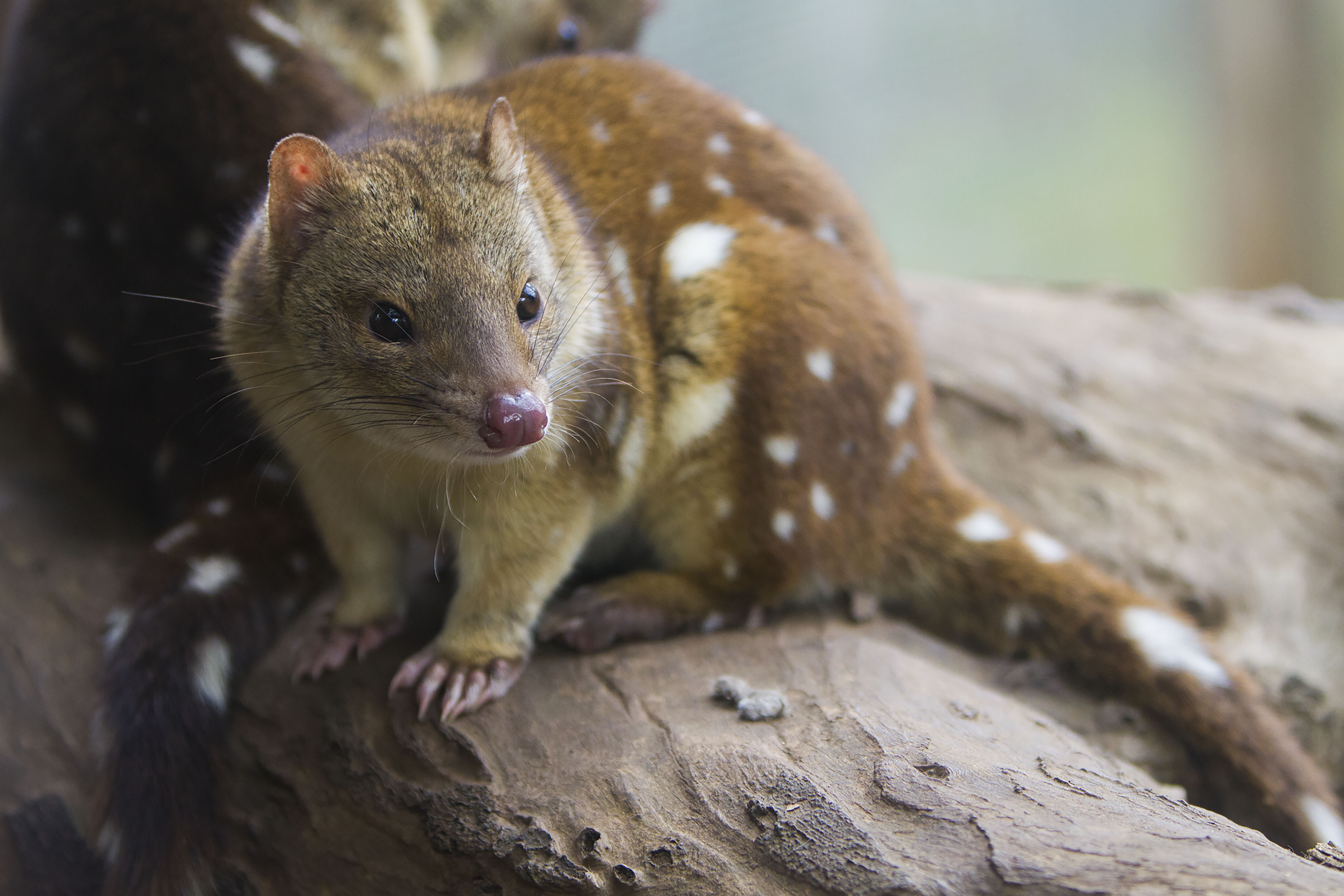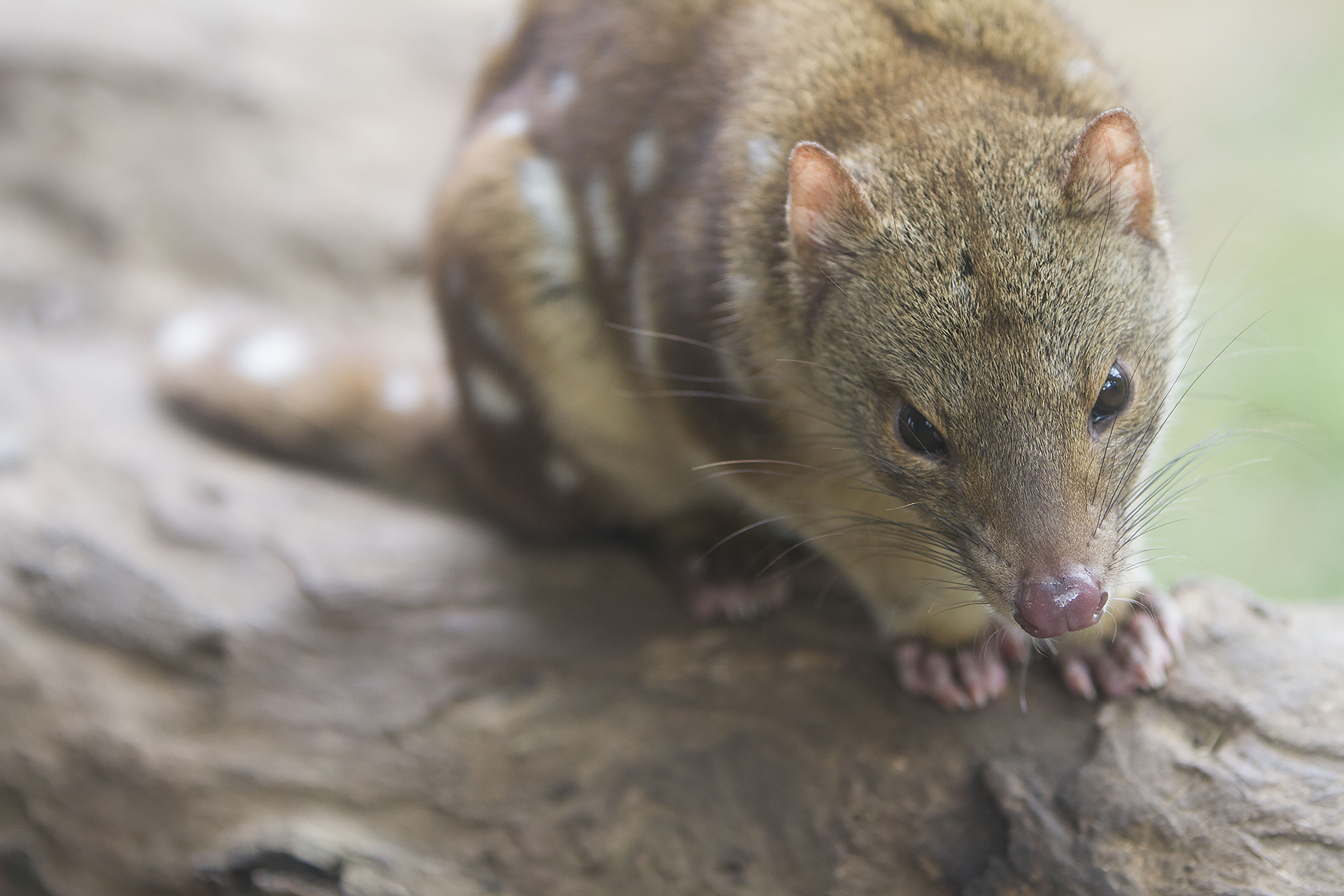Spotted-Tail Quoll
(Dasyurus maculatus)

Eastern Australian Temperate Forests
STATISTICS
Length up to
76 cm
Weight up to
3.5 kgs
Lifespan
5 years
Solitary - Predatory - Territorial
The Spotted-tail quoll likes both wet and dry forests, including sclerophyll, riparian, rainforests, and woodlands. It requires significant amounts of ground cover for denning sites. The male is larger than the female, and this species is the largest native, carnivorous marsupial. It has a red-brown body with bold white spots including on its tail. This species breeds once per year; an average litter is five offspring. After 12 weeks the litter starts eating food the female drops into the pouch. This species is mostly solitary; the males have a larger territory than females and females allow males to overlap their territory. Communicating territory is through scent. The Spotted-tail quoll eats gilders, rabbits, bandicoots, pademelons, and possums. Sometimes it eats insects and birds.
BIODIVERSITY BENEFIT
Population Control
THREATS
Habitat Loss
Due to urbanization and fragmentation.
Predation
The introduction of foxes and ferral cats have seen Spotted-tail quoll populations negatively impacted.
Poisoning
1080 poisoning for dingos has impacted this species.
PROTECT THE WILDARK 100




